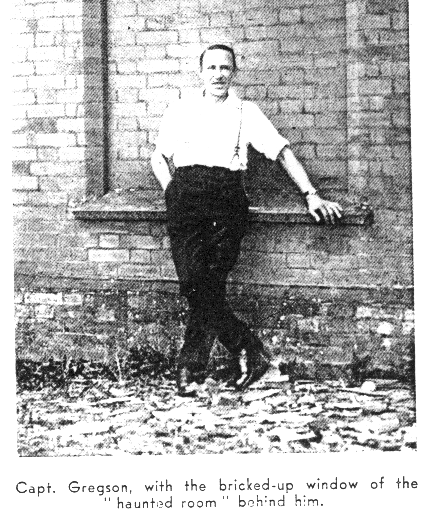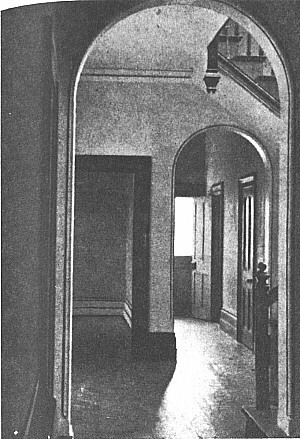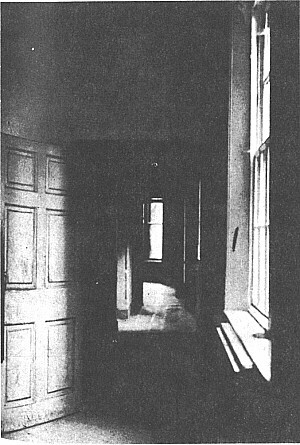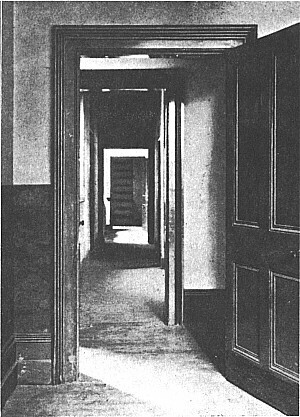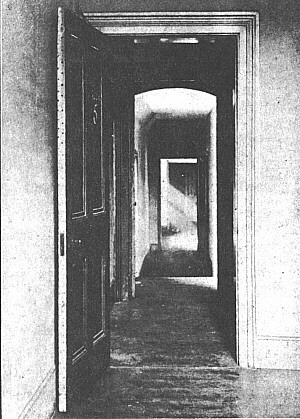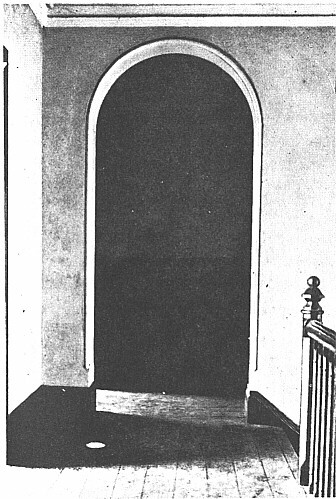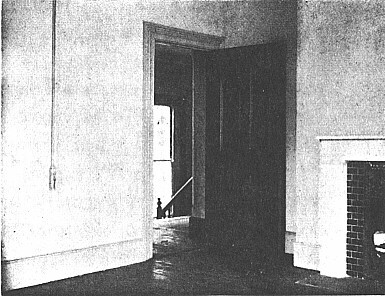|
I was examining some of the more challenging wall writings when I caught onto this charade. I was wondering if the location of the mysterious wall writings was significant. One of the wall writings, one of the "light mass and prayer" writings, designated #7 on the Sidney H. Glanville floor plan had been written in the relatively narrow space of the inside of the arched opening connecting the main stairwell landing to the bathroom hall. Fortunately, the activity of Marianne Foyster and Edwin Whitehouse in the area around this wall writing just before the writing was discovered gave me a sense of deja vu. Then it dawned on me the possibility that the ghost nun had seized the opportunity to use live actors to once again tell the message of her tragedy! Please allow me to detail the steps of this remarkable charade. |

|
If you have already taken the tour from the road to upstairs in the Rectory then you can click here to "materialize" at the main stairwell landing. (When you're at Borley Rectory, do as the ghosts do.) We're going to go inside the Rectory in a short while to see both the chapel and room 7, the "haunted room". But before we do so I have a few things for you to consider. Note that ghosts were sighted outside the Rectory as well as inside and some of you might have some reservations about getting too close to places where a ghost was spotted. And while I'm getting better at remembering where ghosts were seen at, if I forget to warn you about a particular spot that you're alreading standing at, well...sorry. As a matter of fact, I don't believe there is any "neutral" way to approach the Rectory. Indeed, in a moment we're going to go through the gate which appears to the left of the bottom of the big tree in the middle of the picture. This was the Rectory's east gate. Note that the ghost nun was occasionally seen near one of the gate posts, seemingly leaning on it as if withdrawn and sad. I don't remember which post, if any, was mentioned. Although logic would dictate that we simply pass directly between the posts to avoid bumping into air, you should also know that Reverend Smith and his wife reported a phantom coach that came up the road and stopped right between the posts. But we'll deal with this. For right now let's talk about today's project. As I have already mentioned, we're going to be heading for the chapel and room 7, known as the "haunted room". The chapel was actually a tiny room in the entry "tower" that was designated as a chapel by Foysters. Behind and to the right of the big tree in the middle of the above picture you can see what I call the entry tower. Not the tall, narrow window with the rounded top on the upstairs floor of the tower. This was the chapel's window and we'll see the other side of that window in a short while. From where we're standing on the road we also see one of the two windows of room 7 in the above photograph. It is the leftmost window visible on the1st floor (the second level). room 7 must have been one of the nicer bedrooms in the Rectory as it was in the wing where the Bull Family actually lived. It was also second in size in this wing only to the master bedroom next to it. I believe that Room 7 belonged to Harry Bull, Rev. Henry Bull's oldest child and son. Let's proceed through the gate and follow the drive to the Rectory's front door. Also, regardless that this little walk is going to take us uphill a bit let's proceed quickly through the gate and up the drive. We'll stop just before we reach the corner of the Rectory so that we can catch our breath. |
|
We're almost there! But let's stop and catch our breath. You can see the arched front door that we're going to walk through in the lower part of the tower-like structure. But before we go on, notice the bricked up dining room window to the left of the front door. We're not going to discuss this mysterious window here but I'd like to point out something interesting. Every time I look at this window I think that if the bricks that block up the window weren't there that I'd be able to step over the window sill and enter the building. But just how tall is this building? |
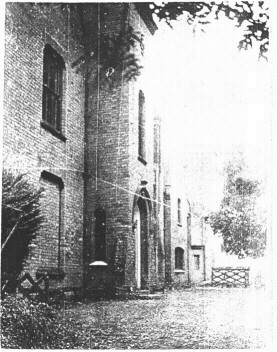
|
